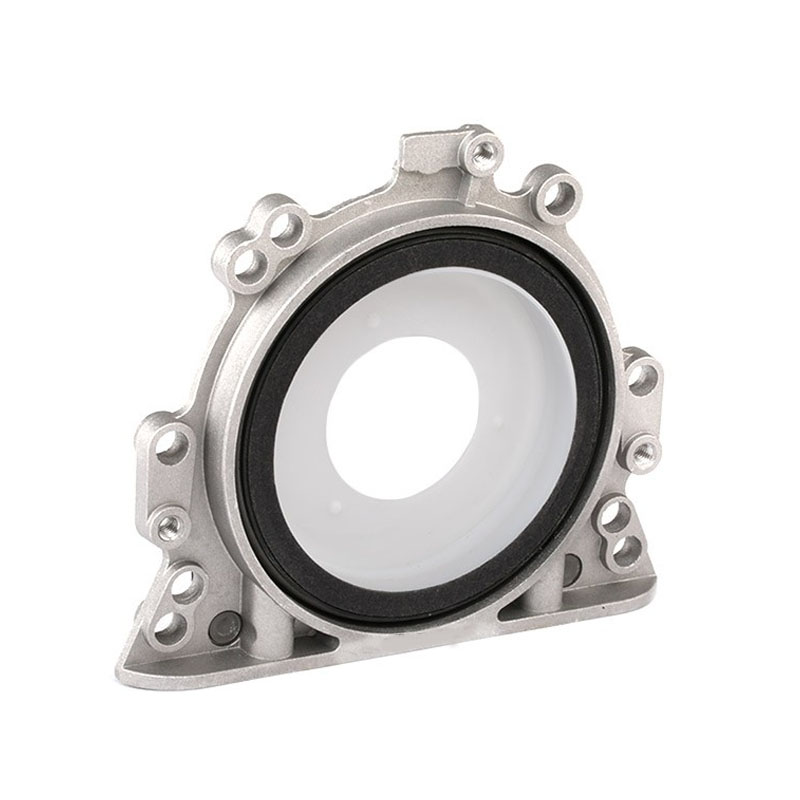Understanding the Importance of Oil Pan Housing Gaskets for Engine Performance and Leak Prevention
Understanding Oil Pan Housing Gasket Importance and Maintenance
The oil pan housing gasket is a crucial component in an engine's lubrication system, playing an essential role in maintaining the integrity and efficiency of the engine. It acts as a seal between the oil pan and the engine block, preventing oil leaks and ensuring that the engine remains lubricated. This article delves into the importance of the oil pan housing gasket, its functions, common issues, and maintenance tips to prolong its lifespan.
Importance of the Oil Pan Housing Gasket
The oil pan is responsible for collecting and holding engine oil, which is vital for lubricating engine components, reducing friction, and transferring heat away from the engine. The oil pan housing gasket ensures a tight seal between the oil pan and the engine block, preventing oil leaks and contaminants from entering the oil supply. A proper seal maintains the oil pressure required for optimal engine performance, which is crucial for longevity and efficiency.
A well-functioning oil pan housing gasket is particularly important because oil leaks can lead to various issues. Low oil levels can result in increased friction, overheating, and, ultimately, engine failure. Additionally, oil spills can create hazardous conditions, posing risks to the environment and safety.
Common Issues with Oil Pan Housing Gasket
Over time, oil pan housing gaskets can wear down due to heat, exposure to engine oil, and constant vibration from the engine. Some common issues associated with a failing gasket include
1. Oil Leaks The most obvious sign of a failing gasket is oil leaking from the oil pan. This can often be spotted as dark brown or black liquid pooling under the vehicle.
3. Contaminated Oil If contaminants are entering the oil system due to a failed gasket, the engine oil can break down more quickly and may require more frequent changes.
oil pan housing gasket

4. Sludge Buildup Frequent oil leaks can lead to sludge formation, which can clog passages and increase wear on engine components.
Maintenance and Inspection
Regular maintenance is key to ensuring the longevity of the oil pan housing gasket. Here are some maintenance tips to help keep it in good condition
1. Regular Oil Changes Keeping the oil clean and fresh can reduce the strain on the gasket and help prevent premature wear.
2. Inspect for Leaks Regularly check for any signs of oil leakage under your vehicle. If you notice any, it’s essential to address the issue promptly.
3. Check Oil Levels Maintaining proper oil levels is crucial for the performance of the engine and the gasket. Low oil levels can lead to overheating and increased wear.
4. Replace Gasket as Needed If you experience leaks or notice any of the issues mentioned above, it may be time to replace the oil pan housing gasket. This should be done by a qualified mechanic to ensure a proper fit and seal.
5. Use Quality Parts When it comes to replacing the gasket, always opt for high-quality parts. Inferior gaskets may not provide a proper seal and can lead to repeated issues.
Conclusion
The oil pan housing gasket may be a small component in the grand scheme of an engine's design, but its impact is significant. By understanding its function and the potential issues that can arise from neglecting it, vehicle owners can better maintain their engines and prevent costly repairs down the line. Regular inspections, timely replacements, and quality maintenance can ensure that the oil pan housing gasket continues to perform its vital role in engine lubrication and efficiency.
-
Understanding the Front Main Engine Seal: Purpose, Maintenance, and Installation
News Jul.29,2025
-
Understanding O-Rings and Seal Rings: Types, Applications, and Custom Solutions
News Jul.29,2025
-
Understanding Crankshaft Oil Seals: Rear Seals, Pulley Seals, and Their Role in Engine Integrity
News Jul.29,2025
-
The Importance of Front and Rear Crankshaft Seals in Engine Performance and Oil Management
News Jul.29,2025
-
Crank Oil Seals: Functions, Types, and Cost Considerations in Engine Maintenance
News Jul.29,2025
-
A Comprehensive Guide to O-Rings and Seals: Types, Materials, and Global Applications
News Jul.29,2025
-
Mastering Diesel and Performance Engine Maintenance: A Guide to Critical Oil Gaskets
News Jul.28,2025
Products categories















